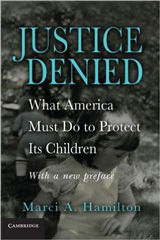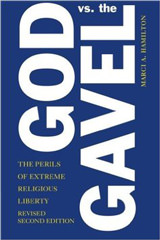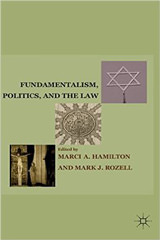The conservative members of the Supreme Court edged closer to eliminating the separation of church and state in the Court’s recent decision American Legion v. American Humanist Association. For several decades, it has been an article of the conservative faith that the Lemon test, which barred government purpose and effect in promoting religion and the excessive entanglement of church and state, needed to be interred, and that separating church and state is actually not good for the culture. As I argued here, this case went far to accomplish that agenda.
Also on their hit list has been the “endorsement test” that Justice Sandra Day O’Connor first championed in Lynch v. Donnelly in 1984 and five years later elaborated on in Allegheny County v. ACLU. The endorsement test was explicitly rejected in American Legion, but without proper respect to Justice O’Connor’s legacy.
I write this column not just as a former clerk to “SOC” as we would call her in chambers, but also as a church-state scholar.
The United States experiment with religious liberty has been an unqualified success in that it has nurtured the proliferation of diversity. Between the absolute protection for belief, the strong protection for speech, and the rational protection of conduct, the country has established fertile soil for religious devotion and independence. Professor Diana Eck has done a masterful job of tracking this amazing diversity with her Pluralism Project.
The project of this era should be how to support the diversification of religious belief and how to ensure that the government remains neutral. Justice O’Connor, a former Arizona state lawmaker and judge, was always in search of the practical solution to legal problems, and her “endorsement test” was a valuable addition to Establishment Clause doctrine to keep the government neutral. She posed the following to be asked in each case: does the audience hear a message of endorsement from the government that endorses a religious viewpoint? Improper “endorsement” was a factor to be considered as part of the Lemon test. If so, it has the potential to make citizens feel disenfranchised, and that is unconstitutional. It was a valuable check on the government, and as a corollary, on the drive by religious entities to obtain government endorsement for their specific religious beliefs. In my view, it was the right test at the right time in history.
Conservatives did not favor the endorsement test, in part because of their hostility to the concept of the separation of church and state. To understand the distinct approaches to the Establishment Clause, see my debate with Michael McConnell on the National Constitution Center’s website.
Yet, let’s set aside for the moment the merits of the endorsement test. Instead, I would like to focus on how women’s contributions to the law are too-often treated: they are erased.
The endorsement test was an essential element of O’Connor’s Supreme Court legacy. Yet, when the Court recently rejected it, not only did it not give full attribution to her for crafting the approach (other than putting her name in a parenthetical), it also renamed it so as to erase her contribution to Establishment Clause history altogether. Alito characterized the American Humanists’ argument several times by saying that they were “offended” by the huge cross, and never applies the heretofore controlling endorsement test. Justice Gorsuch’s concurrence in the judgment turns the concept into an equivalent phrase: the “offended observer.” Again, Justice O’Connor’s formulation and terminology are swept aside.
It is quite the rhetorical move.
First, it takes the focus of O’Connor’s test from the government and instead moves to belittle the lone believer who does not share the views that the government is backing. You can almost hear the justices in the majority addressing the student who felt marginalized by the creche on the courthouse steps in Lynch v. Donnelly and the essentially sectarian prayer at the graduation ceremony in Lee v. Weisman: “Get over it.”
Second, this sleight of hand shifts attention from the government, giving it more latitude to favor majoritarian and politically powerful religious viewpoints, at the expense of minority believers and nonbelievers. This Court is clearing the path for the “Christian country” advocates.
One must wonder whether the justices thought they were doing Justice O’Connor a favor by not plainly rejecting her work. In other words, they were burying one of her most important contributions in the kindest way they could. If that is what they were thinking, it is unfortunately condescending and chauvinistic. O’Connor is a strong woman who can withstand criticism, and she was always up for a debate on her opinions, even if she was unfailingly polite and professional in her verbiage.
O’Connor deserved better from her brethren, who should have given her full credit for the endorsement test, as it was called for decades, instead of concocting a new and condescending phrase, and then explaining their differences. It’s one thing to have a disagreement; it is quite another for men in power to treat a woman as important as Justice O’Connor is to the history of the United States as though her signal contributions never existed.
Back to the merits: the endorsement test should not be forgotten. Note that all three of the female justices on the Court disagree with the Court’s jettisoning of the Lemon test and Justice Ginsburg and Sotomayor embrace the endorsement test by its name. While the majority attempts to erase Justice O’Connor’s important contribution, the three female justices have preserved it sufficiently for future generations to embrace, as they should.









